Introduction
Based on Flusser’s Vampyroteuthis Infernalis, the fictional notions and relationships of space, sexuality, skin, modification are introduced. By setting up a unique character pair (ship) of vampire squid and “I”, the ideas of modding and shipping are clarified within fan studies and game studies contexts. During the artistic residency in London, UK and Berlin, Germany, the audio-visual VR spaces of Hyperbody: Vampyroteuthis Infernalis are created and presented as a transformative computational practice. Moreover, specific practice of speedrunning in Half-Life video game community is elucidated to reflect on Flusserian vampire squid’s spatial sensitivity. The combined research and practice introduce a cross-disciplinary context of Flusserian phenomenology, game studies, fan studies and VR space in game engine. It shows how Flusserian aca-fan modify and intra-act of physical and virtual space and create affective ship in VR space.
Vampire Squid and “I”
Vampyroteuthis Infernalis is published in 1987 in German, Flusser contemplates on human condition and concurrently studies the vampire squid from hell. In difference to a scientific and objective animal study, which is not “pure” but evilly mad, the alternative intersubjective scientific methods need to be demonstrated instead of the ideal vision of objectivity (Flusser 2011, 38).
With compositions of body movement and skin colouration, vampire squid retains extremely complex sexual life. Computing a potential sexuality programme of vampire squid needs an alternative method as almost all the mutations are supposed to be “wrong” and grown into “monsters” (Flusser 2011, 48). It is argued, by establishing an intersubjective relation(ship) of vampire squid and human (“I”), intuition should be used to imagine, contemplate and interfere into a unique vampyroteutian existence.
Between vampire squid and “I”, we both strives to overcome life from verticality to 3D space, with his complex sexual movement, vampire squid advances into a world of multidimensionality (Flusser 2011, 49). Within a multidimensional world system, the reality is both a subject relation to object and an object relation to a subject. Every modification in the subject points toward a modification in the object and vice versa. In vampire squid-human’s multidimensional reality, by his “tentaculation” and our manipulation, modification aims for a mirrored relationship (Flusser 2011, 69-72). Instead of pondering our world system as abstract plane, vampire squid makes sexually-excited depth analysis of his being-in-the-world. Via relationship of various scenes, by erection, 3D space is twisted and spired into a multidimensional space (Flusser 2011, 75-76). With this existence of vampire squid and “I” pair, the encounter of two seemingly different Earth should embrace, collide and shape a new Earth of affective new multidimensional space.
Within such a specific relationship, Flusser reintroduces the idea of dermatology, instead of skin being the border of body and world, body and world border the skin (Wagnermaier 2015, 136). Vampire squid and “I” creates affective relationship, the bodies of this character pair introduce a new philosophical, fictional, sexual and transformative skin-space.
On this affective relationship of vampire squid and “I” in Flusserian context, the ideas of modification and relationship requires further explanation with a cross-disciplinary context towards fandom and game studies. Consequently, a multi-fandom transformative space of modding and shipping is addressed.
Modding and Shipping of Vampire Squid/ “I”
In game studies and gaming industry, modification means the contributors create interference and additional material for the base software. Mods is short for modification, can consist of new game models, textures, sound, mechanic and complete reconstruction of original game space (Poretski and Arazy 2017, 480). Player and developer form the modding community. Related to Flusser’s long period of stay in Brazil, video game modding in the context of a decolonial philosophy of technology in Brazil and the Global South is recently addressed. It is argued, modders as a hub, are mediating between Brazillian game circle and global communities, it has become part of the subjective reality of local game culture (Messias 2020, 4). By embracing and celebrating this unequal and precarious context, game modding encourages players and various community makers to bridge the gap and take over the abandoned space by Modernity (Messias 2020, 1-4). It could be claimed that modding performs as an idiosyncratic role to perforate into the multi-fandom, cross-disciplinary research contexts of philosophy, technology and game studies.
In terms of modding in the development of computational thinking, Grizioti and Kynigos (2019, 280) propose a pedagogical modding approach to encourage students to investigate on computational concepts and practices. Modding is regarded as an integrated tool to embed with diverse computational ideas that shape a game space of a powerful and complex world system. Into the relationship between gender and modding within the context of feminist techno-scientific and computational practices, it argues female dominated fandom is more creative, transgressive and constantly seeks for the alternatives. Queer game modding communities have already triggered attentions in mainstream scenes and some developers have started to listen and collaborate on more transformative works (Whelan and Kapell 2020, 4-7).
With the notion of gender-considerate digital game design, Hughes (2020, 172) introduces the unique relationship between female, STEM education and game modding, alternative and queer modding is addressed as an important trigger to encourage more access and research interest for girls and female.
Modding as a transformative and transgressive practice, constantly seeks for an alternative space of not-usually-valued knowledge. Combining Flusserian’s Vampyroteuthis Infernalis, game studies and technology, the modification of bodies of vampire squid/ “I” demonstrates a precarious and constant modification of situated knowledge, the sexuality and the neutrality of the Modernity. By further discussion on Flusserian notion of dermatology, the concept of character pair (ship) of vampire squid/ “I” needs to be introduced to modify the relationship of “skin” within a multidimensional vampire squid- “I” transformative space.
Shipping is also called character pairing in fandom and art practice, Parry (2019, 127-128) defines it creates new romantic relationship between characters or celebrities in fanfiction. Derived from the word relationship, shipping as transformative works include memes, illustrations, vids and fanfictions published on various online sharing platforms and social media. Via shipping, fandom creates unique space for both knowledge production and “worthless knowledge” under heteronormative context. It encourages and embraces excessiveness, intangibility and affective pleasures of art and fandom (Parry 2019, 128).
A particular relationship could be different-sex, male/male, female/female or poly ship. Recently on investigation of male/male shipping practices. Samer (2019, 545) argues it could contribute to the methodology of remixing transfeminist futures within the context of transgender media studies. Referred back to Flusser’s notion on vampire squid’s sexuality, his infrastructure of society is sexual rather than economic (Flusser 2011, 44). When a particular relationship is established between vampire squid and “I”, the ship apprehends and comprehends with sexual excitement, with sexual colouration, each concept is sexually excited (Flusser 2011, 73-75). It could be argued this posthumanist ship aims for a sexually excited multidimensional space, it is not limited but above the conventions of gender, taxonomy and category, a precarious, fluid, affective and transformative practice seeks to intra-act of sexualised multi-fandom spaces.
Through the shipping of vampire squid/ “I”, Flusserian phenomenology and fandom are paired, modding of vampire squid’ space and fandom space are paired, and posthumanist poly-sexuality characters are paired. Moreover, the process of making Hyperbody: Vampyroteuthis Infernalis VR game in game engine needs to be clarified.
Portals and Transformative Spaces
From September to October 2020, a two-month art residency supported by transmediale and the Berlin University of the Arts (UdK) is conducted. I engage with specific 3D scan portals of watery surfaces and sub-surfaces between London and Berlin. As a result, a spatial autoethnography between and beyond vampire squid and “I” emerges.
London 3D scan portals include Stone Steps in Crystal Palace, Construction Holes and Coast Guard Approved Ring Buoy in Deptford Creek, Viaduct and Canal Lock in Lime House Basin and Passageway in Thames Barrier. Berlin 3D scan portals include Cambridger Straße 17 in Wedding, Viaduct in Hansaviertel, Swamp Pond in Tiergarten, Construction Holes in Torstraße, Transmediale Space in silent green Kulturquartier and Vilém Flusser Archiv Library in UdK.
3D scanning is conducted in public locations that are inconspicuous, incomplete, or everchanging (figure 1). It also includes the unique interior spaces I conducted my residency research in Berlin (figure 2). By further modding and shipping various 3D scan model in game engine, an affective intra-action is triggered of physical and virtual space. Referring to the ship of vampire squid/ “I”, the VR game space is a depth analysis, a spiralling, dangerous, abstract and vulnerable spatial archive of autoethnography. When vampire squid/ “I” conceptualised and positioned into this space, the process of modding and shipping are transformed into the sheer ordinariness of portal’s names and words. That is to say, from modified characters of vampire squid and me, the portals in VR space are modified and shipped unconsciously (figure 3).
In Hyperbody: Vampyroteuthis Infernalis VR space, me and vampire squid work as ship of aca-fans, architectural amateurs and video game meta players. During the intra-action of shipping characters and spaces, the notion of skin has evolved into an abstract cosmos of fragments of sexualised bodies and materials (Bross 2020). Consequently, within this complex spatial ethnographic archive, Stone Steps in Crystal Palace and Cambridger Straße 17 in Wedding are paired. Viaduct in Lime House Basin and Viaduct in Hansaviertel are paired. Construction Holes in Deptford Creek and Construction Holes in Torstraße are paired. Coast Guard Approved Ring Buoy in Deptford Creek and Swamp Pond in Tiergarten are paired. Canal Lock in Lime House Basin and Passageway in Thames Barrier are paired. Transmediale Space in silent green Kulturquartier and Vilém Flusser Archiv Library in UdK are paired. London and Berlin are paired (figure 4 and figure 5).
Through the description of transformative space and practice on Hyperbody: Vampyroteuthis Infernalis, speedrunning, one of the genres of play-through, in video game Half-Life released in 1998, needs to be specifically presented. It is a gameplay video named Half-Life in 20:41 on Youtube made by quadrazid, CRASH FORT, coolkid, pineapple, YaLTeR, Spider-Waffle and FELip in 2014 (figure 6).
Speedrunning means to try and beat a game as fast as one can without cheating (SpeedDemosArchive 2020). Quadrazid with other gamers spent nearly four years scrupulously planning, crafting and executing this run based on the wildest game space expectations. They use heavily scripted movements like jump spam, duck space, 180º turn to substantially perforate and distort the standard neutral game levels and spaces. They completely warp and restructure a highly abstract, intimate, sexualised and dizzily personal space through the whole speedrunning process. Referring to the movement and spatial sensitivity to vampire squid, speedrunning as practice and community of metagame, provides an analysis of space and speed, introduces games as multidimensional transformative spaces. Within a sexualised, precarious and transformative game world, player regains the sense of identity and uniqueness. Ultimately speedrunning, the unrestricted movement, is argued as a re-curated virtual space of errors, accidents and rules (Scully-Blaker 2016, 93-95). It could be further argued speedrunning is the mirrored movement of vampire squid, it generates the colouration of skin and sexualisation of space. In Hyperbody: Vampyroteuthis Infernalis VR space, a transformative base for alternative modding and shipping practice is launched. From vampire squid/ “I” to multiple architectural mods and character pairs, additional multi-fandom characters, their movement and process of making sexualised relationship need to be considered and developed in the future (figure 7).
Reflecting back to a Flusserian phenomenology and the context of post-history, modding and shipping in virtual space tries to deviate the heteronormative and desexualised process, which is the becoming of a possible programmed robot of apparatus for vampire squid/ “I”. The recognition of ourselves within the other, vampire squid, is not modifying and pairing in relation to society but to love, play and make affective practice in isolation within an extra-territorial space (Ochi 2015, 36-40). Ochi uses this conceptual register to reflect on Japanese language’s unconscious and strange expression to both Chinese language characters and Western philosophical thinking as signs of outsiders.
Recently the comparison of Flusserian’s fictional vampire squid to Chinese Taoist animal allegory is addressed. Compared to vampire squid’s hell and dream world system, Chinese philosopher Zhuang Zhou questions if he dreams of being the butterfly or butterfly dreams of being him. A provocative imagination of self and the other under the ontological-existential structure is established (Zhao 2020). It could be argued, the modified and shipped vampire squid/ “I”, is an affective catalyst to intra-act of self and the other, interior and exterior, sexuality and movement, skin and space.
Conclusion
In this paper based on practice-based research project Hyperbody: Vampyroteuthis Infernalis, I introduce and redefine the notions and relationships of space, sexuality, skin, modification from Flusser’s fictional character of vampire squid. By combining Flusserian phenomenology with game studies and fandom, the modificatation and shipping of Vampire Squid/ “I” are addressed within the contexts of queer feminist techno-scientific and computational practices. I describe the portals and transformative practices in Hyperbody: Vampyroteuthis Infernalis VR game and shape ranges of architectural character pairs of places. I compare this VR spatial practice with the video game speedrunning practice to argue for a vampyroteuthian sexualised, precarious and transformative game world.
In conclusion, Flusser has acted as an aca-fan to alternatively construct a philosophical and fictional character of vampire squid that is ready for more cross-disciplinary modifications and pairings. From Vampyroteuthis Infernalis to VR game space, this paper only works and provokes a promiscuous onto-epistemological framework to posthumanist computational research and practice. In order to establish a fluid, precarious, excessive, sexualised and transformative epistemological framework, the research context and practices of game studies, fan studies and VR space should be re-examined. It will intra-act and redefine the academia of queer feminist techno-scientific and computational practices.
Acknowledgments
I would like to acknowledge financial and intellectual support from transmediale and Vilém Flusser Archiv Library in the Berlin University of the Arts (UdK).
References
Bross, Ricarda. 2020. “Vilém Flusser Residency for Artistic Research” Transmediale. Last modified February 20, 2021. https://transmediale.de/projects/vrf-2020.
Flusser, Vilém. 2011. Vampyroteuthis Infernalis. New York: Atropos.
Grizioti, Marianthi, and Chronis Kynigos. 2018. “Game Modding For Computational Thinking: An Integrated Design Approach”. In IDC 2018. Trondheim: SIGCHI.
Hughes, Leigh. 2020. “Gender-Considerate Digital Game Design”. In Women And Video Game Modding: Essays On Gender And The Digital Community, 1st ed. Jefferson, North Carolina: McFarland.
Messias, José. 2020. “Emergent Precariousness”. International Conference On The Foundations Of Digital Games. doi:10.1145/3402942.3402972.
Ochi, Kazuhiro. 2015. “Vampyroteuthis In Der Desexualisierten Welt : Studie Zu Vilém Flusser (1)”. Studies In Language And Culture 36 (2): 23-45. doi:10.18999/stulc.36.2.23.
Parry, Owen G. 2019. “’Shipping’ (as) Fandom and Art Practice.” In Fandom as Methodology: a Sourcebook for Artists and Writers, edited by Catherine Grant and Kate Random Love, 127–146. London: Goldsmiths Press.
Poretski, Leo, and Ofer Arazy. 2017. “Placing Value On Community Co-Creations: A Study Of A Video Game ‘Modding’ Community”. In CSCW 2017, 480. Portland: ACM Conference.
Quadrazid. 2014. “Half-Life in 20:41” Youtube Video. Last modified February 20, 2021. https://youtu.be/VtI5HM7GVGY.
Samer, Rox. 2019. “Remixing Transfeminist Futures”. TSQ: Transgender Studies Quarterly 6 (4): 539-555. doi:10.1215/23289252-7771695.
Scully-Blaker, Rainforest. 2016. “Re-curating the Accident: Speedrunning as Community and Practice.” M.A. thesis, Concordia University, Spectrum Research Repository, https://spectrum.library.concordia.ca/982159/.
SpeedDemosArchive. 2020. “What is speedrunning?” Getting Started. Last modified November 26, 2020. https://kb.speeddemosarchive.com/Getting_Started.
Wagnermaier, Silvia. 2015. “Dermatology”. In Flusseriana: An Intellectual Toolbox, 1st ed., 136. Karlsruhe: Univocal Publishing.
Whelan, Bridget, and Matthew Wilhelm Kapell. 2020. Women And Video Game Modding: Essays On Gender And The Digital Community. 1st ed. Jefferson, North Carolina: McFarland.
Zhao, Lu. 2020. “A Comparative Research Between Flusser’s Fiction And Chinese Philosopher Chuang Tzu’s Animal Allegory”. In Conference 2020 Vilém Flusser And His “Languages”. Berlin: Vilém Flusser Archive. https://flusserarchive.cargo.site/Conference-2020.
Visual Evidence

Figure 1. Sketchfab screenshot of original 3D scan of Construction Holes in Deptford Creek, London, UK.

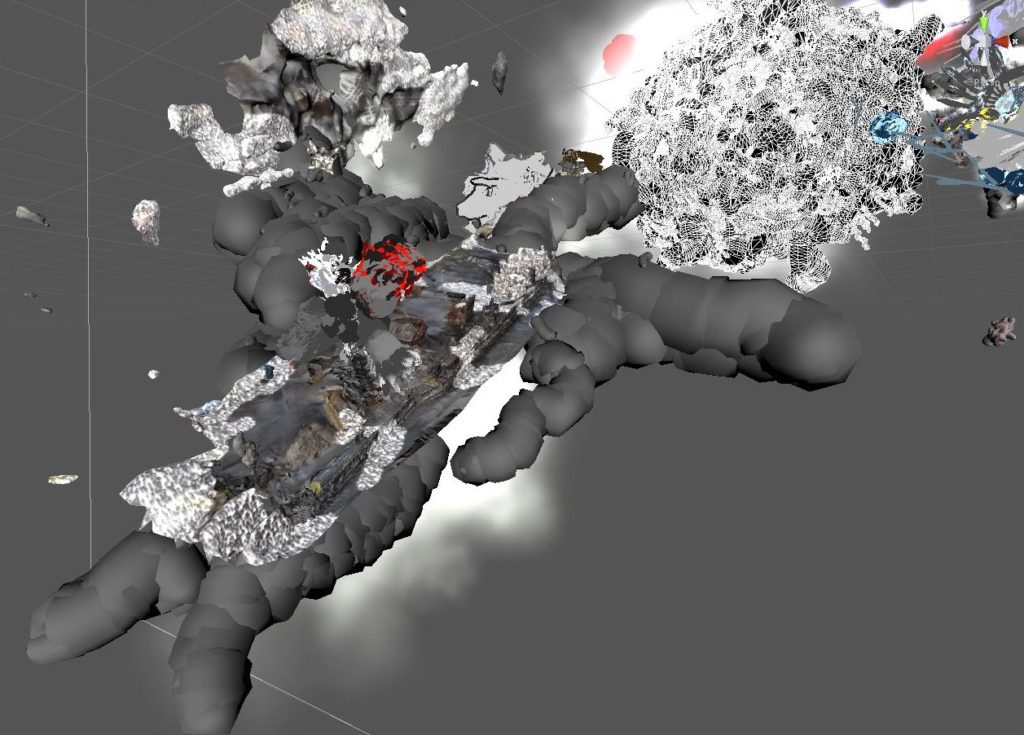
Figure 2. Sketchfab screenshot of original 3D scan of Vilém Flusser Archiv Library in UdK, Berlin, Germany.Figure 3. Unity screenshot of process of modding and shipping various portals and characters in VR space.
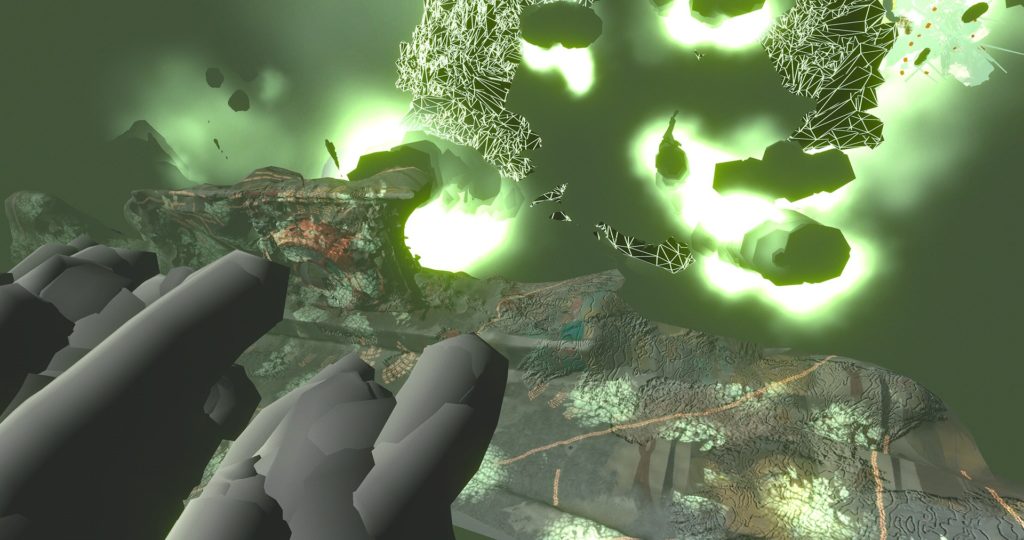
Figure 4. Hyperbody: Vampyroteuthis Infernalis VR game screenshot from modified and shipped Construction Holes.
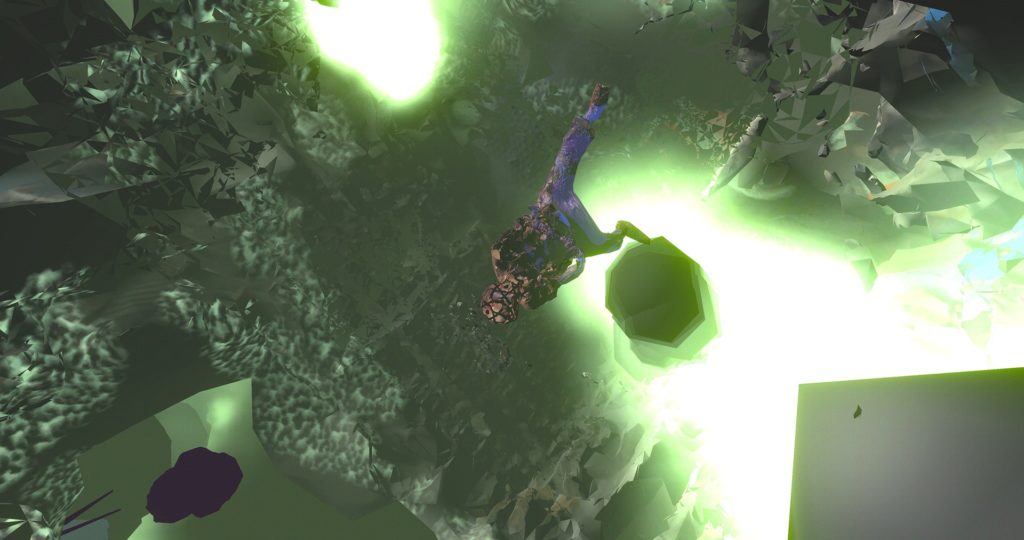
Figure 5. Hyperbody: Vampyroteuthis Infernalis VR game screenshot from modified and shipped Vilém Flusser Archiv Library.
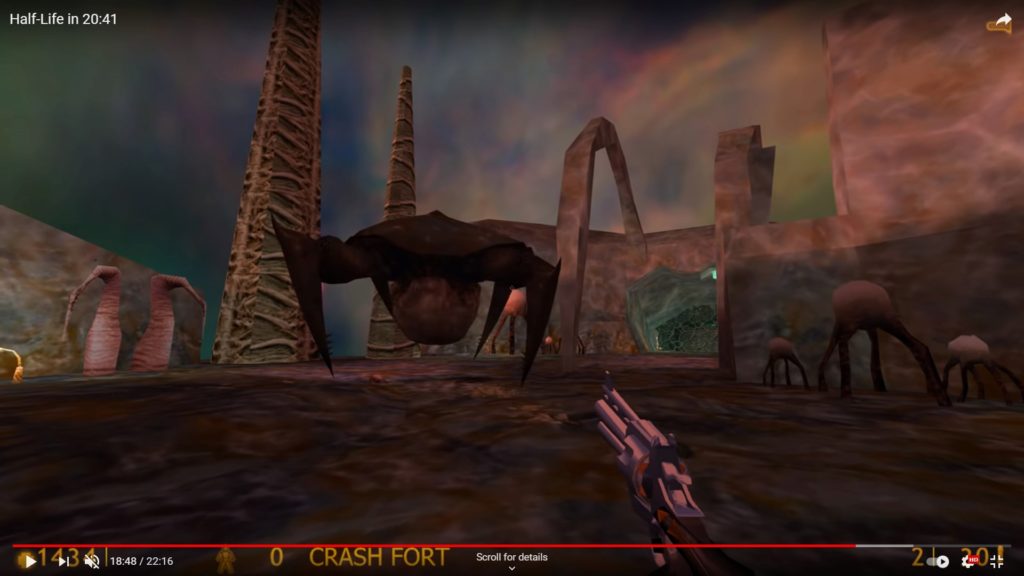
Figure 6. Youtube screenshot of Half-Life in 20:41 uploaded by Quadrazid. https://youtu.be/VtI5HM7GVGY
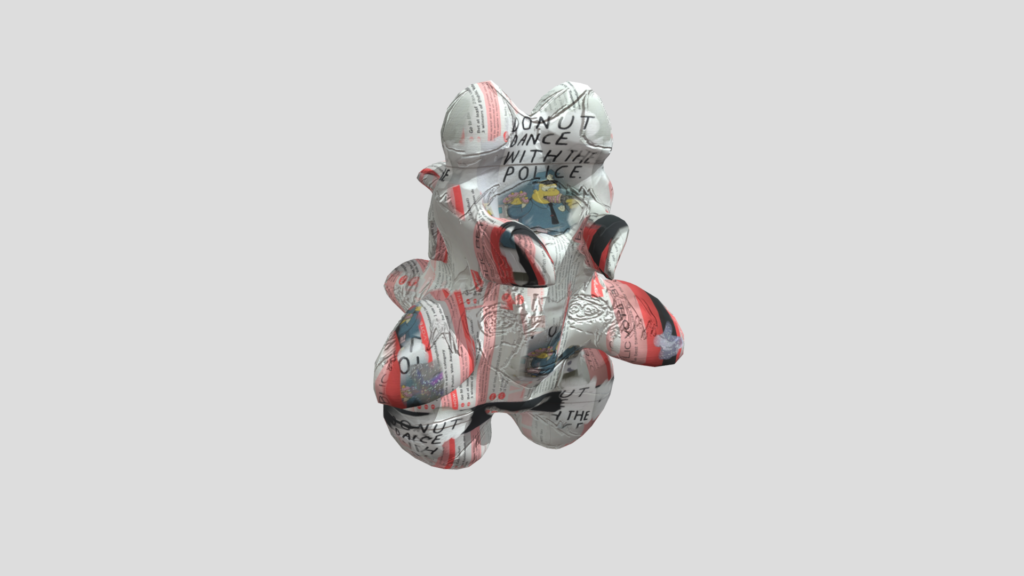
Figure 7. Sketchfab screenshot of Collider 1, additional character of modifying various textures and skins related to Transmediale Space in silent green Kulturquartier.